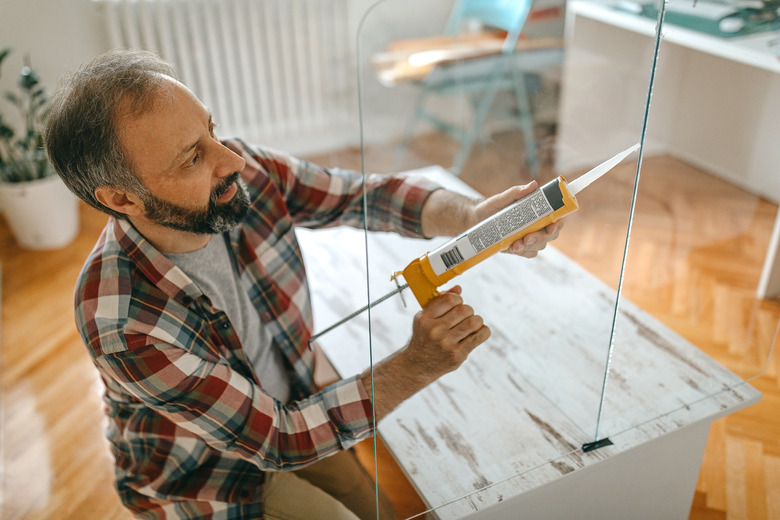How To Glue Plexiglass To Metal
We may receive a commission on purchases made from links.
Gluing plexiglass to other materials can be tricky, as the wrong adhesive either won't work or it might harm the plexiglass, which is made of acrylic. In many cases, cyanoacrylate super glues work well for sticking plexiglass and metal together, provided both surfaces are clean and the point of the bond doesn't need to be flexible. Specialty acrylic adhesives also bond plexiglass to metal.
Super Glue, Super Easy
Super Glue, Super Easy
Super glue, a cyanoacrylate glue, is well-known for its ability to bond unlike materials, such as hard plastics and metal. Acrylic or plexiglass fit the requirements for most super glues, as they won't degrade once the adhesive hits. On the other hand, some super glue harms polyethylene and polypropylene, so it's not suitable for every type of plastic. Some companies make different formulations of cyanoacrylate glues designed for specific purposes, so read the label carefully before purchase to ensure the product works on acrylic or plexiglass. Many super glues work on metals with no issues.
Use super glue to adhere plexiglass to metal for areas that fit snugly up against one another. A drop every square inch is usually enough to bond acrylic to metal with superglue, but make sure the surfaces are clean first. Hold the glued materials together for about a minute, then let the project piece sit for at least an hour or even overnight before use. If the items are heavy or if gravity may separate them before the glue sets, use clamps to hold them together for a while. Spring clamps are ideal for many plexi-to-metal projects, as they're easy to use.
Acrylic or Epoxy Adhesives
Acrylic or Epoxy Adhesives
Acrylic adhesives, sometimes referred to as epoxy glues or methyl methacrylate adhesives (MMA), are excellent for gluing dissimilar materials such as plexiglass and metal. This type of glue has less odor than some two-part resin-style epoxies, and it even works in freezing outdoor conditions. The formulations vary in offering different working times for manipulating pieces after applying the glue to them.
While super glue is best for gluing items that won't be under high strain, a bond created by acrylic adhesive is quite strong after curing. Some acrylic adhesives create such a durable bond that they're used to glue golf club heads to their shafts. Be sure to read the details on the product label, as even within the same product line, slight differences in formulation may affect the end result or may not work for certain applications. Make sure the acrylic adhesive you're considering has the right properties for your specific project.
For best results, scuff both the metal and the plexiglass with fine-grit sandpaper and wipe the dust off. Clean both areas with rubbing alcohol and let the alcohol air dry before applying the glue. If the adhesive is a two-part system and you have to mix the liquids separately, make sure you get the proportions correct or the glue won't adhere as well as it could. Once applying the glue, keep the pieces secured together for at least 15 minutes or as directed on the package label. Allow 24 hours for the glue to reach full bonding strength before using the project piece.
